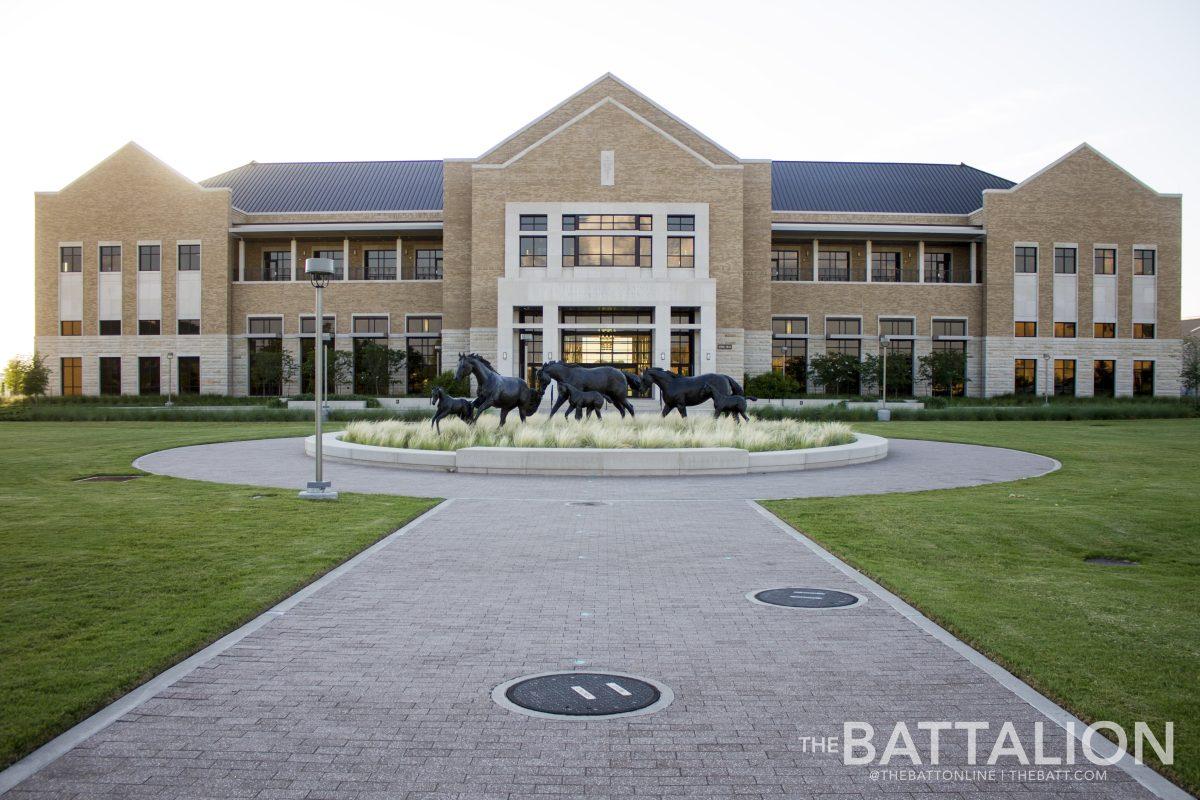The proposition to create a new Institute of Biological Life and Sciences was just one of the many suggested changes in the MGT America Consulting, or MGT, report evaluating Texas A&M. While the institute may never see the light of day, a “common first-year curriculum” is currently being formulated by Working Group 13: Life Sciences Meta-Major.
The proposed institute would combine the existing Department of Biology and Biomedical Sciences Program in an effort to increase resources between the departments and give students more flexibility in their major. The original report, released on Oct. 25, 2021, also suggested the implementation of a new general biology major for all incoming biology students.
“This format allows students the flexibility and time to explore various academic avenues and choose the path that best suits their career goals and maximizes their potential while decreasing time to graduation,” the report said.
Alex C. Keene, Ph.D., professor and head of the Department of Biology at A&M, said the findings in the MGT report laid the groundwork.
“I think the MGT report itself was a starting point,” Keene said. “Really, the overall objective is to streamline the process for [students] and allow them more flexibility to choose what their major is.”
This could be favorable to students trying to find the major that best fits their career goals, Keene said.
“I actually see a lot of benefit in it because you come in as a freshman and you don’t know exactly what you want to do and there’s an opportunity in experiencing some biology in the classroom and interacting with faculty,” Keene said.
The MGT report also mentions this by citing a newsletter by the Texas A&M Office of Undergraduate Studies, which reads that changing majors is a common occurrence.
“It is not uncommon for undergraduates to change their major; some students switch their major two or three times before finding the one that is right for them,” the newsletter by Sydnie Harrell of the Office of Undergraduate Studies reads.
This reasoning and approach is similar to that of the Entry to a Major, or ETAM, process set up for freshman engineering students. Which according to the A&M engineering website, requires students to apply for their major following their freshman year of general coursework.
“With 22 majors to choose from, we don’t ask you to make your decision during your first year,” the engineering website reads. “Our common first-year curriculum was designed to allow you to explore your options while gaining a foundation in programming and engineering.”
Keene said that, as of now, there are no plans to completely overhaul the major process.
“Students switch their majors all the time anyways, and so I think as long as the support network is in place, so that students get where they need to be, then my sense is [that] all departments will be satisfied with that, and so will students,” Keene said. “I think, mostly, it’s about what benefits the students the most.”
In addition to the possible collaborations within the proposed Institute of Biological Life and Science, Keene said the new College of Arts and Sciences could provide biology majors with some important resources.
“Just to give you an example, there’s tons of things that I could see wanting to do with the English department,” Keene said. “Science writing is just a really important part of what we teach in biology, and some would argue it’s one of the most important things you can learn as a science major.”
Nothing is set in stone and the working groups, specifically Working Group 13, have yet to officially present their findings to University President Kathrine Banks, Keene said.
“I was not on a working group, but I think every department had representation on them,” Keene said. “I imagine [a formal decision, will come] probably sometime this summer. As you can see the outlines are all there.”
As for the other half of the proposed institute, Director of Communications for the College of Veterinary Medicine & Biomedical Sciences Jennifer Gauntt said current BIMS leadership does not want to discuss any possible plans until an official decision is made.
“Because suggestions submitted to the president as part of working groups related to the College of Arts and Sciences and the Institute of Interdisciplinary Studies have not yet been approved, we would prefer to wait until those suggestions are finalized before commenting on the BIMS move,” Gauntt said in an email to The Battalion.
The March 25 progress report by the Life Science Meta-Major working group, or Working Group 13, said there is a shared curriculum throughout much of the BIMS and biology freshman course work.
“The working group identified the shared required coursework in the first two semesters for all ‘partner’ degrees both within and outside the College of Arts and Sciences,” the report reads. “The degrees that have been identified with clear overlap in first year curriculum, or that are opting to participate in the program are: Biomedical Sciences (BIMS), Biochemistry, Biology, Genetics, Molecular and Cell Biology, Microbiology, Neuroscience, Nutrition and Zoology.”
Tim Scott, the chair of the Life and Sciences Meta-major working group, said in an email to The Battalion that while he doesn’t think the institute will be created, they are working on a common curriculum.
“I don’t believe we will create an institute as referenced in the MGT recommendations,” Scott said in an email. “However, Biomedical Sciences is moving to the Interdisciplinary Programs portion of Arts and Science[s]. The aim is to create a common first-year curriculum for both biology and biomedical sciences and other similar life sciences degrees.”
Proposed interdisciplinary program of Arts and Sciences hopes to streamline degree process
June 2, 2022
Photo by Photo by Meredith Seaver
The Texas A&M College of Veterinary Medicine & Biomedical Sciences will partner with West Texas A&M to help expand medical research between the two schools.
0
Donate to The Battalion
$2065
$5000
Contributed
Our Goal
Your donation will support the student journalists of Texas A&M University - College Station. Your contribution will allow us to purchase equipment and cover our annual website hosting costs, in addition to paying freelance staffers for their work, travel costs for coverage and more!
More to Discover










